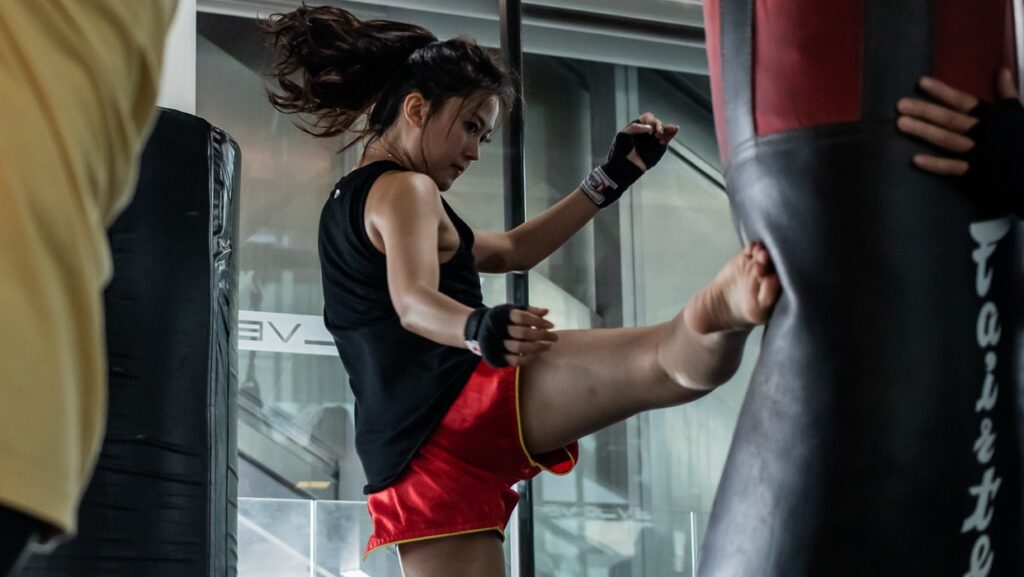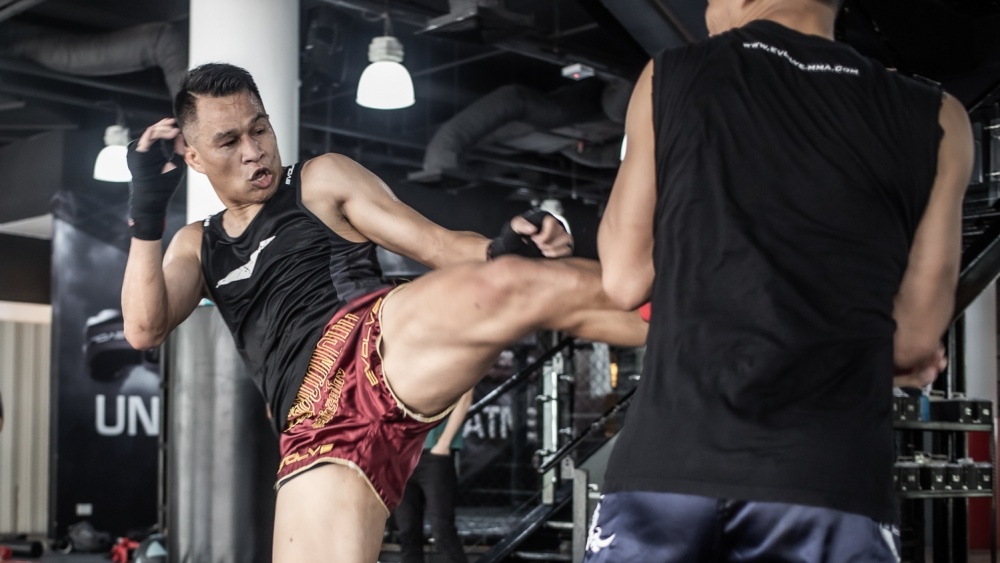Muay Thai is one of the most versatile striking arts ever developed, yet it’s also one of the safest to train in. You can thank the gentle sparring culture for this. Muay Thai was developed in Thailand and it remains the country’s national sport. Many Muay Thai fighters in Thailand compete multiple times per month, so taking damage during sparring sessions doesn’t make sense from their perspective. Most of their fighting experience comes from competitions, not brutalizing each other in the gym.
This article will examine some of the partner drills Muay Thai fighters use to hone their skills that are mutually beneficial for both partners.
Seven Muay Thai Partner Drills That Help Both Parties
Ready to learn some Muay Thai partner drills you and your training partners can use to level up your games? Let’s dive right into our list:
1) Low-Kick Check Drill
Here’s one of the first drills new Muay Thai students learn. The check drill is as simple as drills get. It allows you to improve the form of your low kicks while learning how to check kicks. It’s also an excellent exercise for conditioning your shins. Muay Thai fighters aim to make contact with their shins when they throw kicks and that takes some time to get used to. Landing a roundhouse on someone’s head or getting a kick checked can be painful when your shins aren’t properly conditioned.
Here’s what the drill looks like:
- Stand in striking range of your training partner and throw a light low kick at their lead leg. Your partner then turns the knee of their lead leg to the outside while lifting their foot off the ground. That’s how you check a low kick.
- As soon as your partner checks your kick, they also throw a low kick that you’ll check before throwing another low kick. Alternate for about 20 reps, then switch stances and repeat.
- Start lightly when performing this drill since your shins collide against each other when kicks are checked. You can then gradually increase the power behind your kicks as your shins get conditioned by the exercise.
2) Jab-Cross-Hook Drill
The jab-cross-hook is one of the most common combinations used in Muay Thai and this drill allows you and your partner to work on your technique, timing, and spacing. It’s a great way to prepare for more advanced training activities like sparring. Here’s what it looks like:
Stand in front of a training partner. Your partner will use their gloves as mitts, while you throw a few combinations.
Once you’re done with your combination, it’s time for you to be the target, while your partner throws a few combinations. Keep alternating until you’ve both had enough.
3) Kick-Jab-Cross-Hook Drill
This is a more advanced variation of the jab-cross-drill. It works on your ability to put punches and kicks together, and your ability to defend against them. Here’s what the drill looks like:
- Stand facing your opponent in punching range. Throw a roundhouse kick to their body and follow up with a jab-cross-hook combination.
- Your partner blocks the kick with their double block, parries the straight punches, and blocks the hook.
- Repeat about three times before switching with your training partner. Now it’s their turn to throw the combination, while you play defense. Keep alternating for about three to five minutes before taking a break. Aim for about three to five rounds.
4) Offense-Defense Drill
Here’s another effective drill that helps to prepare students for sparring matches and competitions. Figuring out little things like the proper distance to throw your punches can be challenging when you’re new to Muay Thai, but drills like this simplify things. Think of this drill as a highly regulated sparring session.
To perform this drill:
- Put on your sparring gear and find a space you and your training partner can move freely.
- You and your partner start alternating between offense and defense, meaning you throw a combination, then your partner throws one.
- Use everything you’ve learned when performing this drill. Move around the ring with your feet, evade strikes with head movement, and do everything you can to prevent your training partner from landing their combinations clean, while you do the same.
- Break up the drill into multiple three-minute rounds to make it as close to a real sparring match as possible.
5) Flow Drill
Flowing with a partner is an effective way to master putting everything you’ve learned in Muay Thai together. It requires you to use your defense, footwork, punches, kicks, knees, trips, clinch trips, and everything else you have in your arsenal.
Flowing shouldn’t be confused with sparring since you’re not putting any power into your strikes. The goal of this drill is to stand in front of your partner and alternate throwing strikes and playing defense. Consider slowing down the speed of your strikes if you or your partner are having a hard time seeing strikes in time to defend against them.
The more you perform this drill, the more natural throwing strikes and defending against them will feel to you.
This exercise helps to improve your ability to balance your weight on one leg, which translates to faster, more powerful kicks. Your improved balance will also come in handy whenever an opponent catches one of your kicks.
Here’s what the drill looks like:
- Extend one of your legs so your training partner can catch it and pin it against their torso.
- Your training partner then starts moving forward, backward, and laterally all over the ring, forcing you to follow them while staying balanced. Turn your hips over every time your partner comes to a stop as if you were throwing a kick. Do this several times for each minute spent balanced on one leg.
- Perform the drill for about a minute and switch legs. It’s your partner’s turn to go once you’re done with the second leg.
7) Kick For Kick Drill
This drill helps to improve your balance, defense, and kicking technique. There’s not much to it, you simply alternate roundhouse kicks to the body with your training partner. They kick, you block, and fire off your own kick. Keep going for one to three minutes before taking a break.
You may also like:
10 Strength And Conditioning Exercises For All Muay Thai Practitioners

















